Research @ the Beach
Each semester, this online publication is produced to acknowledge faculty and students for their research-related efforts. Our Spring 2025 issue of Research @ the Beach highlights ongoing faculty research and the 2025 Faculty Internal Multidisciplinary Grant, Mini-Grant, and Summer Stipend recipients. In this issue:
Learn how Dr. Lindsay Pérez Huber is advancing equity though critical race theory, chicana feminisms, and racial microaffirmations; Dr. Tairan Liu and Dr. Oscar Morales-Ponce are advancing robot-related research; Dr. Deborah Fraser and her students are contributing to better understanding imflmmatory disease; and the collaborative work being done by Dr. Sara O’Connor, Dr. Steven Jensen, and Dr. Shirley Feldmann-Jensen in the Geo-SpACE lab.
You can also discover Dr. Heidi West’s interdisciplinary research on migration and health; how Dr. Jongyu (Paula) Hao is promoting ethical leadership and long-term value; and Jacqueline Record’s efforts to advance English in the field of logistics.
We are also proud to highlight the amazing research efforts of graduate students Haleh Hashemi and Robert C. Thomas along with undergraduate student Emma Varela.
More information can be accessed by clicking the topics below.
| Awardee | College | Project Title | Award Type |
|---|---|---|---|
| Mortaza Saeidi | COE | Developing Paraffin-based Hybrid Rocket Fuels with Enhanced Mechanical Properties | Mini-Grant |
| Shams Tanvir | COE | Development of a Hardware-in-the-Loop Simulation Setup for Signalized Intersection | Mini-Grant |
| Tairan Liu | COE | Extraterrestrial Base Construction with a Multi-Robot System | Mini-Grant |
| Michelle DeMars | Library | Table for One: Exploring the Impact of Increased Individual Study Spaces | Mini-Grant |
| Kevin Sinchak | CNSM | Estradiol and progesterone regulate subcellular distribution of progesterone receptors in arcuate nucleus | Mini-Grant |
| Theodore Stankowich | CNSM | Factors Influencing Geographic Variation in Armadillo Armor | Mini-Grant |
| Soyeon Kim | COTA | Parallel Documentary | Summer Stipend |
| Rebecca Bryant | COTA | Las Americas Project: Summer 2025 Choreography Laboratory | Summer Stipend |
| Rowena Aquino | COTA | The Films of Kazuo Hara and Sachiko Kobayashi: Collaboration in Dissent | Summer Stipend |
| Sam Anvari | COTA | Continue UX/UI Research at the EdenSpiekermann Design Agency in Berlin | Summer Stipend |
| Gina Napolitan | COTA | Surveying the Visual Culture of Neighborhood Policing | Summer Stipend |
| Alicia Dwyer | COTA | Alicia Dwyer Filmmaking Workshops in Hamburg, Germany | Summer Stipend |
| Steve Zee | COTA | Then and Now: 325 Years of French Influence on Tap Dancing | Summer Stipend |
| Claudia Barrulas Yefremian | COB | Navigating Cultural Challenges in Hispanic-Owned Businesses | Summer Stipend |
| Kristin Stout | CED | Expanding the Reach of the Faculty Formative Feedback Project (FFFP): Training “Partners” and Program Implementation Support for Other California State Universities (CSUs) | Summer Stipend |
| Anna Lee | COE | Elucidating External Stimuli-Driven Charge Carrier Dynamics for Enhanced Energy Storage Device. | Summer Stipend |
| Ava Hedayatipour | COE | A Heterogeneous Impedance Measurement LoC with Machine Learning Architectures for Balancing Power and Processing | Summer Stipend |
| Andrea Calabrese | COE | Innovative Biocementation Techniques for Enhanced Soil Stability in Seismically Vulnerable Coastal Regions | Summer Stipend |
| Hailu Xu | COE | Integrate AI Models into Large-scale Decentralized P2P Systems | Summer Stipend |
| Hossein Sayadi | COE | Machine Learning for Device Fingerprinting through Power Consumption Analysis in IoT Networks | Summer Stipend |
| Ernest Chavez | CHHS | A Legal Analysis of Race, Mass Incarceration, and Medical Care at Louisiana State Penitentiary, the Largest Maximum-Security Prison the U.S. | Summer Stipend |
| Kurt Escobar | CHHS | Development of in vitro model of exercise-regulated autophagy using electrical pulse stimulation in C2C12 myotubes | Summer Stipend |
| Evan Schick | CHHS | The Impact of Second and Fourth Generation Combined Oral Contraceptives on the Stress Response During Exercise | Summer Stipend |
| Tina Zhao | CHHS | Exploring the Impact of the Strengthening Youth Resilience (SYR) Program: A Multi-Year Study of Evidence-Based Mental Health Interventions for Underserved Youth | Summer Stipend |
| Sean Smith | CLA | No Level Playing Field: Race, Segregation and Popular Gaming Culture Los Angeles 1977 - 1986 | Summer Stipend |
| Amy Wax | CLA | An Experimental Exploration of Bisexuality in the Workplace: Sexism and Homoprejudice as Moderators of the Relation between Job Applicant Sexual Orientation and Perceived Employability | Summer Stipend |
| Heather Rae-Espinoza | CLA | Health Equity in Pharmaceutical Research: Using Qualitative Research on Patient Voices | Summer Stipend |
| Francis Hugh Wilford | CLA | Gender, Intimacy, and Race in Anglo-American Relations, 1877-1920 | Summer Stipend |
| Jan Haldipur | CLA | Finalize Book, “Prison Hashtags: Incarceration, Reentry, and Digital Identity” | Summer Stipend |
| Jeffrey Lawler | CLA | Looking for a Place to Play: A Racial History of Arcades in Long Beach, CA | Summer Stipend |
| Gabriella Hancock | CLA | Modeling Pro-Animal and Habitat Conservation Behaviors: Psychological Precursors & Propagation Factors | Summer Stipend |
| Sara O'Connor | CLA | Spatial justice in the "diesel death zone": a community-engaged approach to transportation development in Long Beach, California | Summer Stipend |
| Mystyn Mills | CLA | Building Resilient and Functional Wildlife Corridors: A Multispecies Framework for Enhancing Connectivity in Fragmented Landscapes | Summer Stipend |
| San Bolkan | CLA | Student voice and student choice: Why do some students ask for help in class while others stay silent? | Summer Stipend |
| Gino Galvez | CLA | Evaluating the Impact of a Summer Research Program on STEM Persistence Among Undergraduate Computer Science Students | Summer Stipend |
| Cory Wright | CLA | Truth as operational coherence | Summer Stipend |
| Shelley Dykstra | CLA | Preparing TAs for Effective Language Teaching at CSULB | Summer Stipend |
| Christopher Shaw | CLA | Uncovering Creole America: Borderlands, Islands, and Imaginary Homelands. | Summer Stipend |
| Jillian Pearse | CNSM | Effects of groundwater withdrawal in California's Central Valley on nearby fault activity | Summer Stipend |
| Michael Schramm | CNSM | Extended Woven Networks from a Novel, Common Building Block | Summer Stipend |
| Jen-Mei Chang | CNSM | Expansion of the Faculty Formative Feedback Project across the CSU | Summer Stipend |
| Abby Bradecich | Student Affairs | Trauma Informed Practice for Brief Therapy | Summer Stipend |
| Applicant | College | Co-Applicant | College | Application Title |
|---|---|---|---|---|
| Benjamin Hagedorn | CNSM | Laurie Huning | COE | Building Resilience in a Changing Mountainous Hydrologic System |
| Bo Fu | COE | Iveris Martinez | CHHS | Strategies to Mitigate Digital Ageism in Artificial Intelligence |
| Amir Ghasemkhani | COE | Arjang Fahim | COE | Privacy-Preserving Integration of Patients’ Demographic and Clinical Data in Modern Healthcare Systems |
| Itxaso Rodriguez | CLA | Anna Bax | CLA | PERCEPTUAL DIALECTOLOGY IN CALIFORNIA: LATINX PERSPECTIVES |
| Michael Carlson | CNSM | Jennifer Johnson | CNSM | Virtual-reality guided research instruction for early career students towards advanced molecular techniques in ocean sciences |
| Rebecca Bryant | COTA | Joel Zinn | CNSM | Galactic Bodies: Crafting Astrophysics+Dance Research |
| Panadda Marayong | COE | Kim Vu | CLA | Evaluation of Human-Automation Teaming in UAM Operation using Virtual Reality |
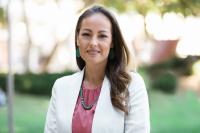
Lindsay Pérez Huber, Ph.D.
Professor of Equity, Education & Social Justice
Advanced Studies in Education & Counseling
College of Education
My research stems from my own experiences as a first-generation Chicana college student from a working-class family, led by strong women. In my schooling experiences, I became increasingly aware of how structural barriers and everyday racism shape educational outcomes for marginalized communities. As an undergraduate in ethnic studies and political science at UC Irvine, I learned the tools to name these experiences and began a life-long journey of developing and refining my critical consciousness. This consciousness led me to explore Critical Race Theory and its intersections with Chicana feminisms in education, recognizing its potential to illuminate and challenge structural inequities and move towards racial justice. My training in these areas began as a Ph.D. student in the School of Education at UCLA, where I was mentored by Dr. Daniel Solorzano who modeled for me the possibilities of humanizing and empowering mentorship, pedagogy and scholarship in academia. This mentorship was formative to the ways I would develop my own strategies to femtor and teach my students at CSULB.
As a critical race theorist, my research has been committed to advancing equity, justice, and transformation in education by addressing systemic inequities at the intersections of race, immigration, and education. Grounded in critical interdisciplinary and intersectional approaches, I have refined and developed justice-oriented frameworks that produce insightful analytical possibilities for making transformative change in education. My work is situated along three interrelated axes of inquiry: 1) Race, immigration, and education; 2) racial microaggressions and racial microaffirmations and, 3) critical race feminista epistemologies and methodologies. I have utilized CRT, Chicana feminisms, and sociocultural theories to examine how institutional processes and social contexts shape undocumented Latinx student experiences in higher education, and identified specific educational practices and policies that maintain and reproduce inequitable learning environments and disparate educational outcomes for Latinx students, and undocumented students in particular. I have developed a racial microaggressions analytic framework to examine the systemic functionality of microaggression with institutional racism and white supremacy, pushing theorizing of racial microaggressions from the interpersonal to the systemic. I have further theorized the concept of racial microaffirmations as a response to microaggressions, the everyday strategies of shared cultural intimacy that recognize the humanity and joy practiced within Communities of Color. Finally, I have further developed epistemological and methodological strategies for more humanizing research processes with Latinx students and communities.
The impact of my research extends beyond academia and into the CSULB campus and the broader educational community. At CSULB, my work informs teacher preparation programs, ensuring that future educators are equipped with a critical understanding of race and equity. My research also supports faculty development and institutional culture shifts that foster institutional transformation change that prioritizes equity and justice. More broadly, my work contributes to national conversations on educational justice, empowering educators, policymakers, and community leaders to implement equitable practices that enhance student success and agency. Through scholarship, mentorship, and advocacy, I strive to create learning environments where all students, particularly those from historically underrepresented backgrounds, can thrive.

Tairan Liu, Ph.D.
Assistant Professor
Department of Mechanical and Aerospace Engineering
College of Engineering
Dr. Tairan Liu, an Assistant Professor of Mechanical and Aerospace Engineering at the College of Engineering, has long been captivated by the potential of autonomous systems to revolutionize the way machines interact with their environments. His interest in multi-agent and robotic systems emerged from a deep curiosity about how independent entities, whether in nature, transportation networks, or human organizations, coordinate, adapt, and collaborate to achieve complex goals. Early in his academic journey, he was fascinated by the power of distributed decision-making and its ability to produce intelligent, emergent behavior. This led him to explore multi-agent systems as a framework for designing autonomous technologies that can operate efficiently and resiliently under uncertain conditions. Over time, his research has been driven by the transformative potential of these systems to address real-world challenges, from intelligent transportation to environmental monitoring.
Dr. Liu’s research focuses on developing robust, scalable strategies for multi-agent robotic systems, particularly in dynamic and uncertain environments. His work explores fundamental questions in distributed intelligence, autonomous decision-making, and cooperative control, with applications spanning autonomous transportation, swarm robotics, and environmental monitoring. By designing intelligent coordination and adaptability mechanisms, his research seeks to enhance the efficiency, safety, and resilience of autonomous systems.
To support this work, Dr. Liu has secured funding to establish a state-of-the-art multi-agent research lab at CSULB, featuring a fleet of autonomous drones and ground vehicles. This facility enables experimental validation of theoretical models and allows for real-world testing of multi-robot collaboration, decentralized control, and adaptive learning mechanisms. His research aims to push the boundaries of autonomous system capabilities by developing cooperative robotic networks that can dynamically respond to changing conditions, optimize performance, and bridge the gap between theoretical advancements and practical deployment.
Dr. Liu’s research has an impact beyond the lab, contributing to CSULB and the broader community. On campus, the multi-agent research lab serves as a hub for cutting-edge innovation in robotics and AI, providing students with hands-on learning opportunities and fostering interdisciplinary collaborations. Through this initiative, CSULB is positioning itself as a leader in robotics research, offering students pathways to engage in high-impact projects, industry partnerships, and careers in automation, AI, and intelligent systems.
Beyond the university, Dr. Liu’s research has the potential to address pressing societal challenges. By developing intelligent, cooperative robotic systems, his work contributes to improving urban mobility, enhancing environmental monitoring capabilities, and strengthening disaster response efforts. Collaborations with local industries, government agencies, and research institutions ensure that the insights from his research translate into real-world applications, fostering innovation in automation and intelligent infrastructure. Ultimately, his work is dedicated to advancing autonomous multi-agent systems that are not only technically robust but also socially beneficial, shaping the future of intelligent robotics in meaningful and impactful ways.
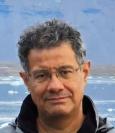
Oscar Morales-Ponce, Ph.D.
Associate Professor and Associate Chair
Department of Engineering and Computer Science
College of Engineering
My passion for distributed computing and autonomous robotics stems from a deep interest in how interconnected systems can collaborate to accomplish complex tasks efficiently. While researching at Chalmers University in Gothenburg, Sweden, I explored the intersection of distributed computing and autonomous vehicles. This experience sparked a greater curiosity about heterogeneous robotic systems and how enhanced communication can improve their performance.
A key application of this research lies in cooperative mobile robots, which have significant potential in areas such as search and rescue. By exploiting distributed computing principles, these robots can work together to reduce risks for human personnel and decrease response times in locating injured individuals.
My primary research focuses on theoretical distributed computing, computational geometry, and their applications to cooperative mobile robots. This work involves developing algorithms and frameworks that enable multiple autonomous agents to operate efficiently without centralized control. Theoretical distributed computing addresses fundamental challenges such as consensus, fault tolerance, and synchronization in decentralized systems, ensuring reliable and scalable coordination. Meanwhile, computational geometry provides essential tools for robot navigation, motion planning, and spatial organization. When applied to cooperative mobile robots, these fields enhance multi-robot collaboration in tasks such as search and rescue, swarm robotics, and autonomous vehicle coordination. By improving communication and decision-making among heterogeneous robots, this research advances their adaptability, efficiency, and effectiveness in dynamic environments. A recent paper on this topic has been accepted for presentation at SIROCCO 2025 in Greece in June 2025.
Recently, we received a grant from the Department of Defense (DoD) to acquire fully functional autonomous cars and drones, supporting further research into cooperative autonomous systems. Previously, I was awarded a grant from Aerospace Corporation to develop cooperative autonomous vehicles capable of working together to transport heavy objects.
This research in distributed robotics will have a significant impact on students at CSULB by providing hands-on applications of computer science principles. Integrating robotics into the curriculum will allow students to gain practical experience with real-world distributed systems. A new course on mobile robotics is being proposed, offering undergraduate students’ opportunities to engage in cutting-edge research. Additionally, honors students and graduate researchers will be able to conduct thesis projects using these autonomous robotic systems, further strengthening CSULB’s role in robotics and distributed computing.

Deborah Fraser, Ph.D.
Professor
Department of Biological Sciences
College of Natural Sciences and Mathematics
I have always been interested in understanding human disease and assumed growing up that I would become a medical doctor. Towards that end I volunteered for a year at a hospital after high school but soon found looking at blood smear slides under a microscope to be the highlight of my days. Based on this, I pivoted from my pre-med pathway and completed a BSc in Cellular and Molecular Pathology and Microbiology at the University of Bristol (UK) instead. For my PhD studies at the University of Wales College of Medicine I undertook a project that was sponsored by a biotech company developing a novel therapeutic for arthritis. The pathway they were interested in targeting in this disease was an inflammatory pathway known as the complement system. I made several complement inhibitors during my PhD that were used as proof of concept for therapeutic development. I particularly loved the pre-clinical aspect of working on something that had a real chance of making an impact on human health, and my lifelong interest in the role of complement in inflammation began. During postdoctoral work at the City of Hope and UC-Irvine I continued to look at the mechanisms of complement and inflammation in neurodegeneration and cancer.
At CSULB my lab continues to study molecular mechanisms of complement proteins in inflammatory disease. We are particularly interested in a complement molecule, C1q, that appears to be important in removing not just dangerous foreign pathogens from the body, but also any damaged proteins or dying cells. We have been funded by the National Institutes of Health (NIH) since 2014 and are currently looking at the role of C1q in removal of oxidized LDL (so-called “bad” cholesterol) from the body, by macrophage immune cells. Participation in laboratory research was one of the most effective ways I learned biology - in a hands-on setting. Undergraduate and graduate MS students participating in my research program are instrumental to the success and progress of the lab and are involved at every stage of the projects. In the Fraser lab, students perform studies in vitro, in primary isolated murine or monocyte-derived human macrophages and endothelial cells, and macrophage cell lines and, in vivo, in mouse models of hyperlipidemia (
high cholesterol”). Our goal is to identify the mechanisms and pathways involved in cholesterol removal, which should assist in the discovery of novel targets for therapeutic intervention in atherosclerosis.
Overall, it is a great privilege to perform research that I love, and to contribute novel findings to the field, while also getting to train the next generation of immunologists through student teaching and mentoring.
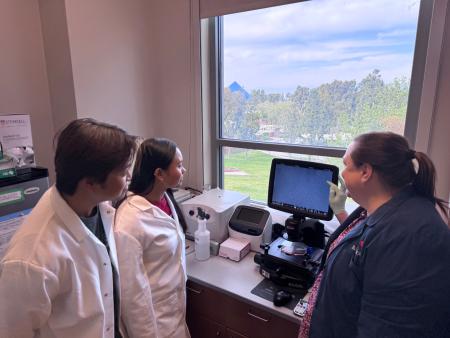

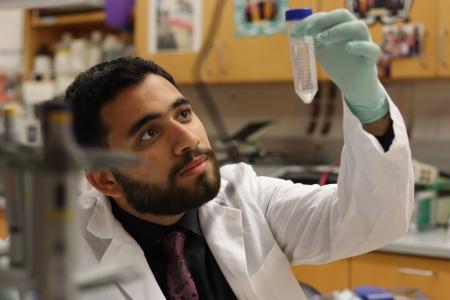

Sara O'Connor, Ph.D.
Associate Director of the Geo-SpACE Lab
Department of Geography
College of Liberal Arts

Steven Jensen, Ph.D.
Professor
Emergency Services Administration Program
College of Professional & International Education

Shirley Feldmann-Jensen, Ph.D.
Lecturer
Emergency Services Administration Program
College of Professional & International Education
Steve Jensen and Shirley Feldmann-Jensen, faculty in the ESA program, have a combined 50 plus years of experience in humanitarian and disaster risk management. They previously led research on the Woolsey fire, focusing on “stay and defenders.” Sara O’Connor assisted them as a graduate student back then. Over the following six years, they worked with the Malibu community to help establish a Community Brigade and built a roadmap to resilience for communities impacted by fires. In 2024, Sara joined CSULB as the Associate Director of the Geo-SpACE lab. The team reconvened their fire research collaboration in response to the Franklin Fire in Malibu, for which they obtained funding from the Natural Hazards Center via the University of Colorado, Boulder, funded by the NSF.
Heightened wildfire activity and the prevalence of concurring wildfires has placed enormous stress on the state’s mutual aid system, in which firefighters are sent across jurisdictions throughout California to help local responders. Further, responders unfamiliar with unique terrain and topography may be ill-equipped to respond. Communities in fire prone areas have an imperative to prepare their own defenses, to preserve themselves, their community and the built environment. Our research in Malibu in 2018-2019 in the wake of the Woolsey Fire demonstrates that in the absence of assistance and belief in the capacity of emergency responders, community members—when able—preferred to remain and defend their own properties and help their neighbors. Further, they planned to prepare to defend their own properties during future fires—which in this area are not an if, but a when. That ‘when’ is now. The devastating Franklin fire that began in Malibu on December 9, 2024, provides an opportunity for a longitudinal study to answer the following questions: First, how has the Malibu community adapted its disaster response modalities after the Woolsey Fire? Second, what was the impact of the community’s adaptations and preparedness on the outcomes of the Franklin Fire? Outcomes pertain to both the impact on the built environment and community members.
This research is pertinent to the future of Southern California writ large. First, this study will enhance our understanding of communities that experience repeat disasters and face threat from multiple natural hazards which characterizes much of the Los Angeles region. Second, it will provide insights into the type of infrastructure and resources needed to prepare for community-led disaster response as emergency services are continuously stretched thin by concurrent disasters.

Heidi West, Ph.D.
Assistant Professor
Department Health Science
College of Health and Human Services
As an interdisciplinary researcher with a history of applied experience, I work to contribute innovative evidence that can improve health equity, particularly in the global health context. I am an Assistant Professor in the Department of Health Science, College of Health and Human Services. My research explores how policy and social forces impact health services, with a focus on migration and family structures. I have nearly fifteen years of health research and program experience in the United States, Africa, and Asia, including the co-founding of a research and capacity-building NGO, Global Environmental Health LAB (GEH LAB). My contributions in this space include advancing the literature about the health of migrant sending communities in South and Southeast Asia and helping build the next generation of diverse public health leaders through research-based training and mentoring in partnership with international NGOs.
Several factors brought me to a career in public health research, including my own observations of inequities growing up in a rural area with only a critical access hospital, and my experience as a case manager where I helped newly arrived immigrants and refugees access healthcare. I was drawn to the field of health policy because of its grounding in interdisciplinary collaboration, and its focus on using science to improve the health of communities. While substantial progress has been made in global health and development, significant disparities persist, and siloed health and economic systems hinder cross-sectoral approaches. Migration and health are two important domains where this plays out. My research brings an innovative relational lens to questions of migration’s global impacts to produce evidence on how health systems can respond to demographic shifts. My background in feminist ethics and trauma informed approaches has guided my focus on social relations and community resilience as venues for change; when quantitative evaluations of systems and services are combined with community-focused methods, we can provide a deeper understanding of context and help identify avenues for interventions.
Some of my recent published studies have found that internal migrants in Myanmar face troubling disparities in access to clean water and sanitation (West et al., 2021a), and women in Bangladesh whose spouses migrated overseas experienced improvements in healthcare access and empowerment across several domains, but spousal migration also induced an increase in family and gender related barriers to healthcare (West et al., 2021b, West et al., 2024). By centering relationships between migrant sending and receiving communities these studies contribute to our understanding of the influence of migration on household healthcare use, population health, and women’s health related empowerment. Another of my recent studies was the first of its kind to examine variations in COVID-19 vaccine hesitancy among individuals in a single migrant source population across different destinations. Results reveal relatively low vaccine hesitancy among temporary foreign workers showing the potential for high returns for targeting vaccine access and distribution to migrants (West et al., 2021c). Building on these studies, I developed projects that look at the role of migration and family structures in healthcare access on both the global level and the highly local level. First, through a cross-country comparison in Nepal, Indonesia, Bangladesh and the Philippines, the first study of its kind using Demographic and Health Survey (DHS) data, and second through a collaborative CSULB project examining the role of family in student health services utilization for immigrant students.
My overarching goal is to generate evidence that can inform health system improvement and resource allocation at multiple levels. Through linking international frameworks and local community priorities, my research produces scientific knowledge to assist policy makers and practitioners in designing and implementing effective interventions that improve health equity and address some of the major challenges of our generation.
West, H., Than, M., Win, T., Oo, K. T., Khaing, K., Aye, T. T., ... & Shibata, T. (2021a). Internal Migration as a Social Determinant of Occupational Health and WASH Access in Myanmar. Annals of Global Health, 87(1). PMC8588907.
West, H., Robbins M., Moucheraud C., Razzaque A. G., Kuhn R. (2021b). Effects of spousal migration on access to healthcare for women left behind: A cross-sectional follow-up study. PLoS ONE 16(12): e0260219. PMC8638922.
West, H., Khan, A., Razzaque, A., Kuhn, R. (2024). Migration, Gender, and Families: The Effects of Spousal Migration on Women's Empowerment. Demography, 61 (3): 769–795.
West, H., Lawton, A., Hossain, S., Mustafa, A. G., Razzaque, A., & Kuhn, R. (2021c). COVID-19 Vaccine Hesitancy among Temporary Foreign Workers from Bangladesh. Health Systems & Reform, 7(1), e1991550.

Jongyu (Paula) Hao, Ph.D.
Professor
Department of Accounting
College of Business
Dr. Hao’s research interests have evolved over time, beginning with incentive design and performance evaluation, then expanding into corporate social responsibility (CSR), and more recently, CEO organizational identification (OI). Early work focused on how executive compensation structures influence managerial decision-making and firm performance. This led to an interest in CSR, particularly how both financial and non-financial incentives shape corporate sustainability initiatives. More recently, Dr. Hao’s research has shifted toward CEO OI, examining how a CEO’s identification with their organization affects strategic decision-making, particularly in areas such as investment in R&D and ethical leadership. This progression reflects a growing focus on the intersection of executive identity, incentives, and corporate governance.
Dr. Hao’s research investigates how executive compensation influences corporate strategies, with a particular emphasis on the impact of CEO compensation design on firm behavior and decision-making. One key study in this area is "Corporate Environmental Responsibilities and Executive Compensation: A Risk Management Perspective," published in Business and Society Review. This paper explores the relationship between corporate environmental responsibilities and executive compensation, offering valuable insights into risk management and sustainability. Notably, it was recognized as the top-downloaded paper of 2018-2019 in the journal.
Another significant study, "CEO Inside Debt and Selection of Auditor Industry Specialist," is forthcoming in the Managerial Auditing Journal. This research examines how CEO inside debt influences the selection of auditor industry specialists, contributing to a deeper understanding of the governance implications of executive financial incentives.
Dr. Hao has also examined the role of subjective performance evaluation in managerial decision-making. Her work in this area, "Subjective Performance Evaluation and Forward-Looking Implications: The Role of Supervisor Incentives," was published in the Journal of Management Accounting Research. This study investigates how supervisor incentives shape forward-looking managerial behavior, particularly in the context of performance evaluation.
More recently, Dr. Hao’s research has concentrated on CEO OI, exploring how a CEO’s identity and personal attachment to the organization influence corporate strategy and decision-making, particularly regarding R&D investment and ethical leadership.
Dr. Hao’s research holds the potential to enhance CSULB’s reputation as a leader in ethical leadership and responsible business practices. Within the university, her work contributes to the academic discourse on leadership identity, corporate governance, and strategic decision-making, enriching classroom discussions in business ethics, executive compensation, and strategic management.
Beyond CSULB, Dr. Hao’s research informs business leaders, policymakers, and corporate boards about the risks of short-termism and the importance of aligning executive incentives with long-term corporate goals. By examining the relationship between CEO compensation, corporate strategies, and organizational behavior, Dr. Hao’s work encourages companies to design incentive structures that balance financial performance with sustainability, ethical leadership, and corporate social responsibility. As businesses face increasing pressure to align profitability with broader societal concerns, Dr. Hao’s research offers valuable insights into how compensation design and leadership identity can influence strategic decision-making, promoting both firm performance and long-term value creation.

Jacqueline Record
Director, American Language Institute
College of Professional and Continuing Education
I have spent my career in the field of TESOL, teaching English to speakers of other languages, and our work is providing the language instruction that students need to accomplish their academic and professional goals. In the American Language Institute (ALI), we have a long history of success in teaching English for academic purposes in our CEA-accredited Intensive English Program (IEP) and in English for Specific purposes in the areas of business in our Graduate Business Prep Program (GBP) and medical English. ALI programs provide pathways and conditional admission options to CSULB degree programs.
In exploring ways to expand our specific-purposes English programs both internationally and domestically, starting with the local trade and transportation industry, including the Port of Long Beach, and its relationships with CPaCE’s Center for International Trade and Transportation (CITT) and the Global Logistics Professional program (GLP) seem a natural fit. ALI has supported international students preparing for the GLP by allowing them to further develop their language skills in the IEP program.
In April 2024, I participated in a U.S. Commercial Service trade mission for Intensive English Programs to Mexico and Colombia. Our trip included a visit to Barranquilla, Colombia, which has a major port. In meetings, I talked with port representatives and with our Commercial Services reps and English USA partners about my interest in working with ports on English for Logistics. This led to a request from the Colombian Maritime Authority for a proposal to send maritime traffic controllers to ALI for a customized English for Logistics and Maritime program. The Colombian government provided full scholarships for this cohort and is planning to send a second one in August 2025. CITT industry partners provided scholarships for two ALI faculty members to take the GLP certificate program in order to develop a curriculum that reflected the language needs and operational realities of global trade. This investment in faculty development has also prepared ALI to expand our offerings in logistics.
We are delivering a customized program in which the participants learn about port operations here, spend time with counterparts, and attend specialized talks, trainings, and tours of local trade-related facilities. These include not only the Port but also the Marine Exchange of Southern California where the students were able to interact with their US counterparts. Recently, they gave a talk to the students in the Port of Long Beach Academy of Global Logistics at Cabrillo High School.
This pilot program has created interest within the local trade community for training in other areas of logistics, opened communication with the Colombian Maritime Authority, and opened conversations with other international ports about training opportunities with English language training support. We are using the data from this pilot for research-informed development of new modules. The program contributes to the Beach 2030 internationalization goals in providing new pathways for students and it is another example of the unique value CSULB brings to its community and partners.

Haleh Hashemi
M.S. in Nutritional Science
Thesis Chair: Michelle Barack, Ph.D.
Relationship between total triiodothyronine and bone health in female collegiate endurance runners: investigating low energy availability
On average, each University’s NCAA Division I Track and Field team has about 42 athletes (NCSASports, 2025). Between 15 and 25 athletes on the team are endurance runners (i.e., running 800 to 10,000 meters). Prior research studies demonstrate that these NCAA Division I female and male collegiate endurance runners are at increased risk of sustaining bone stress injuries (BSIs). Female cross-country athletes have the highest rate of BSI per athletic exposure among all collegiate sports, and track and field athletes have the third highest (Rizzone et al., 2017). One study highlighted 21% of track and field athletes experienced a BSI within a one-year follow-up period (Bennell et al.,1996).
The development of BSIs involves many factors, including genetics, training, footwear, and nutrition. Women may be more vulnerable to BSIs than men due to the greater impact of short-term low energy availability (LEA) on bone metabolism. Energy availability is the amount of energy available to support normal physiological processes after energy expenditure from exercise. Low energy availability, as per the Female and Male Athlete Triad, when prolonged, has consequences. Prolonged LEA can cause low bone mineral density (BMD) and increase the risk of BSIs especially in anatomical sites with less bone loading and more trabecular bone (e.g., lumbar spine) than cortical-rich bones (e.g., femur).
Cross-country athletes frequently experience LEA (< 30 kcal/kgFFM/day), with prevalence rates ranging from 18% to 58% among middle- to long-distance runners (Jesus et al., 2021). Identifying and addressing LEA early, and before the development of low BMD, can prevent potential long-term or irreversible effects to bone health in this population. Although multiple tools are available to detect LEA in athletes, many are unreliable, such as food diaries, which rely on self-reporting, or inaccessible, such as those only available in laboratories. My study fills that gap.
Several investigations among exercising women suggest that total triiodothyronine (TT3), a hormone involved in the regulation of resting metabolism, may serve as a possible early indicator of LEA. TT3 can be measured easily with a blood test and provides a comprehensive measure of thyroid hormone levels including both the bound and unbound forms. However, no study has explored the role of TT3 as an early indicator of LEA and risk of BSI among female and male collegiate endurance runners. Further, no study has done so within the context of the Female and Male Athlete Triad model.
Methods
Relying on data from a large multi-site, longitudinal study of female and male NCAA cross-country and track and field distance runners (Fredericson et al., 2023), my study investigates the association between TT3, and bone health parameters, including BMD and prospective BSI, within the Female and Male Athlete Triad. Hormonal profiling (TT3 levels), nutritional assessments, and dual-energy X-ray absorptiometry (DXA) scans to evaluate bone health parameters were included in the data. Runners also completed the Female and Male Athlete Triad Cumulative Risk Assessment (CRA), which evaluated clinical risk factors associated with LEA.
Of the larger original sample, this study only included runners participating in track and field events of distances ranging from 800 to 10,000 meters and athletes involved in cross-country competitions at two NCAA Division I institutions in California. The final sample was 84 female and male collegiate endurance runners, with an average age of 19.3 years, running, on average, 41.05 and 59.59 miles/week, respectively. Their data were analyzed using multiple statistical approaches.
Findings
A Pearson correlation analysis of TT3 levels and bone health (BMD, bone mineral content [BMC], Z-scores, and BSIs) among male and female runners indicated that, in female runners, higher TT3 levels was associated with a lower incidence of future BSIs among sites with a higher content of trabecular bone (r = - 0.317, p = 0.034). In females, TT3 levels were also positively correlated with lumbar spine BMC (r = 0.329, p = 0.029) and lumbar spine Z-score (r = 0.308, p = 0.045). In males TT3 levels had a significant positive correlation only with the lumbar spine Z-score (r = 0.361, p = 0.026).
The nonparametric Spearman’s correlation analysis of the relationships between TT3 levels and CRA criteria (i.e., the Triad), including EA risk scores, showed, that females’ TT3 levels exhibited a significant negative association with both the CRA energy deficiency score (p = 0.040) and the CRA score (p = 0.050). Further, athletes characterized with moderate or high Triad risk (CRA) exhibited lower TT3levels (104.20 ± 24.98 vs. 116.91 ± 20.84, p = 0.049) when compared to low risk.
Results from a chi-square test assessing the association between TT3 tertiles (levels) and BSI incidence revealed that females in the low and moderate TT3 tertiles had a higher proportion of trabecular-rich BSIs. In the highest TT3 tertile, no trabecular-rich BSIs were observed in the female athletes.
Finally, a regression analysis assessed the predictive value of TT3 levels on the incidence of BSIs.In females, TT3 significantly predicted future BSI (r = 0.101, p = 0.034), but no significant relationship was observed in males. While not included in my study, two other explanations for these differences are the use oral contraceptives in females and iron levels, which may also affect bone health.
Conclusion
The findings from my study show that the hormone total TT3 is linked to energy deficiency, bone health, and BSIs in female endurance athletes. High levels of TT3 are associated with low energy deficiency. In females, higher levels of TT3 are associated with better bone health in trabecular areas, including higher lumbar spine bone mineral content and higher spine Z scores. In females, higher levels of TT3 are also associated with a lower incidence of future BSIs.
My findings indicate that using TT3 as a marker for LEA and a predictor of future BSIs in trabecular-rich areas can enhance the reliability of bone health assessments and provide more effective treatment plans to reduce BSIs. This is especially important for Sports Medicine Practitioners who support NCAA female track and field teams. Practitioners can monitor female collegiate endurance runners’ TT3and suggest interventions to optimize energy availability and ultimately reduce both low bone mineral density and bone stress injuries. The female athletes could then run longer, with fewer injuries, and have lengthier careers.
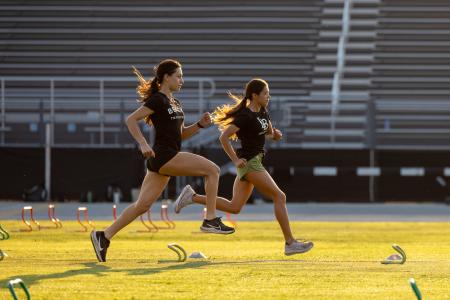
References
Bennell, K. L., Malcolm, S. A., Thomas, S. A., Reid, S. J., Brukner, P. D., Ebeling, P. R., & Wark, J. D. (1996). Risk factors for stress fractures in track and field athletes. A twelve-month prospective study. The American Journal of Sports Medicine, 24(6), 810–818. https://doi.org/10.1177/036354659602400617
NCSASports (2025). Track and field: Scholarship standards. https://www.ncsasports.org/womens-track-and-field/scholarship-standards
Fredericson, M., Roche, M., Barrack, M. T., Tenforde, A., Sainani, K., Kraus, E., Kussman, A., Miller Olson, E., Kim, B. Y., Fahy, K., Miller, E., Diamond, E., Meraz, S., Singh, S., & Nattiv, A. (2023). Healthy Runner Project: a 7-year, multisite nutrition education intervention to reduce bone stress injury incidence in collegiate distance runners. BMJ Open Sport & Exercise Medicine, 9(2), e001545–e001545. https://doi.org/10.1136/ bmjsem-2023-001545 https://www.ncsasports.org/mens-track-and-field/scholarship-standards
Jesus, F., Castela, I., Silva, A. M., Branco, P. A., & Sousa, M. (2021). Risk of low energy availability among female and male elite runners competing at the 26th European cross country championships. Nutrients, 13(3), 873-. https://doi.org/10.3390/nu13030873
Rizzone, K. H., Ackerman, K. E., Roos, K. G., Dompier, T. P., & Kerr, Z. Y. (2017). The epidemiology of stress fractures in collegiate student-athletes, 2004-2005 through 2013-2014 academic years. Journal of Athletic Training, 52(10), 966–975. https://doi.org/10.4085/1062-6050-52.8.01

Robert C. Thomas
M.A. in History
Thesis Chair: Dr. Eileen Luhr
Angered by Fear: Thrash Metal, Youth Culture, and American Society in the 1980s -Second Place Winner of the College of Liberal Arts Outstanding Thesis Award
Currently, Americans across the political spectrum are confronting a sociopolitical crisis regarding the United States’ role in the twenty-first-century world order and the extent to which American exceptionalism should inform the nation’s trajectory going forward. Guiding Donald Trump’s second presidential administration and its supporters is a shared ideology centered on restoring American prestige domestically and abroad. This dogmatic emphasis has come in the wake of a multitude of economic crises, stemming from the COVID-19 pandemic, that has generated fears of an oncoming recession. Many contemporary conservatives also view the decades-long fights to expand women’s bodily autonomy and LGBTQ+ rights as examples of the nation’s weakening social fabric. Further, the ever-expanding carceral state that has disproportionately imprisoned immigrants and Americans of color has incited harsh criticisms of American state power and fostered a polarized electorate. This crisis is not without historical precedent, and investigating examples from the past can enhance our understanding of the present. Indeed, the debates, arguments, and viewpoints we see today are informed by and built upon prior attempts to accomplish similar economic, social, and cultural ambitions. Americans at the onset of the 1980s experienced a similar political environment.
By the early 1980s, a conservative political movement had quickly emerged to derail the legislative and sociocultural accomplishments of the Civil Rights, gay rights, and women’s liberation movements of the late 1960s and early 1970s. The New Right and the political coalition that revolved around U.S. President Ronald Reagan aimed to resituate the American national identity toward the white, middle-class, nuclear family – just as it had been during the 1950s when the post-World War II economic boom was in full effect. Notably, Reagan’s 1980 campaign slogan was “Let’s Make America Great Again.” Yet, like we see now, and just as we saw in the 1960s and 1970s, young people in the 1980s led the charge to exercise their agency. They created subcultures to subvert and fight a conservative political establishment that tried to suppress their autonomy and independence.
As a cultural historian, I seek to investigate how these youth subcultures and their artistic forms of expression can inform scholars about major historical changes. Rock music and its association with youth culture in the United States after World War II is one example. In particular, 1980s’ American thrash metal continues the legacy of rock music in America, and my research illuminates this subculture that scholars have largely ignored. Scholars have written books and articles about how rock music in the 1950s frightened conservative parents about the infusion of African American music into white youth culture, how the Woodstock generation of the 1960s’ challenged the entire postwar political order, and how the punk movement of the 1970s’ reflected youth’s frustration regarding the commodification of rock’s authenticity. My research furthers these conversations about postwar American youth culture by situating the 1980s’ thrash metal scene as continuing late-twentieth-century debates regarding youth culture and youth agency amid a major conservative turn in American politics.
To analyze the 1980s’ thrash metal scene and capture its actions and intentions, I examine interviews, editor letters, artwork, reviews, and artist features printed in music magazines. Rather than relying solely on music and lyrics, these sources offer unique perspectives from fans, journalists, and artists that help paint a fuller picture of the entire scene through cultural products other than just the music and ground magazines that mediate cultural production. From my analyses of these sources, I found that the 1980s’ American thrash metal scene represented a site of contestation between young people and American society that informed contemporary debates about youth, youth culture, and youth agency amid the decade’s changing political, economic, social, and cultural dynamics.
Amid the conservative resurgence in American politics and the deindustrialization of the American economy in the late 1970s, young people in the 1980s found themselves in a place of uncertainty regarding their socioeconomic futures. As a response to their precarious situation, my research shows how thrash metal’s development is both a progressive and fundamentalist movement. On one hand, musicians pushed the visual, linguistic, and sonic characteristics of heavy metal beyond its limits. The shock value generated from the music and its associated aesthetics and lyrical themes worried parents, religious leaders, and politicians about their ability to corrupt adolescents’ values, lead them to abuse drugs and alcohol, and tempt them toward Satanism (see Image #1). On the other hand, members of the scene retained a deep commitment to violently upholding compulsive heteronormativity typical of classic heavy metal and emphasizing a rugged hypermasculinity through white racial imagery under the guise of restoring the culture to its roots and reclaiming heavy metal for America’s youth. While mostly catered to young white men, the scene welcomed women and people of color as long as they adhered to these norms. In doing so, the scene adopted comparable devotions to masculinity and power that derived from patriarchal gender norms and whiteness that Ronald Reagan and his political coalition employed to gain popular support during the 1980s, much like we saw in the 2024 election.
For example, the cover of a 1985 issue of Total Thrash magazine exemplifies the scene’s tendency to weaponize authenticity – and therefore inclusion into the subculture – by chastising other men for embodying traits and aesthetics associated with femininity and, therefore, weakness (see Image #2). Primary targets of such vilification were glam metal musicians and their supporters who engaged in gender play by adopting androgynous bodily aesthetics and playing a softer, more radio-friendly style of heavy metal. For many in the thrash metal scene, glam metal’s popularity in the early 1980s amounted to a bastardization of the music and culture they grew up with, which prompted calls for violence as an act of protest against a perceived feminization of heavy metal.
My analysis of music magazines alongside contemporary newspaper articles, religious and parent organization newsletters, as well as the manifestos from those organizations’ leading figures further highlight the dynamics and exchanges between the thrash metal scene and social conservatives during the 1980s. Both sides attempted to advance their respective social, political, and cultural agendas. The New Right conservatives that emerged in the late 1970s emphasized that the stability of the nuclear family was a status marker of a healthy society. The 1980s’ American thrash metal scene represented a form of youth protest against these conservative notions of “family values.” It was a cultural arena for young people to assert their individuality, autonomy, and agency through displays of musical prowess, exhibitions of hypermasculinity, and authentic devotions to heavy metal music and culture. Indeed, the thrash metal scene’s emphasis on hypermasculinity largely reflected social conservatives’ views regarding heteronormativity and hard-bodied masculinity. Both groups maintained commitments to associating AIDS and homosexuality with femininity and weakness, proving that the 1980s’ gender order called for men to be more masculine.
While the thrash metal scene provided young people respite from neoconservative culture warriors and the mundanity of a working-class future that no longer guaranteed economic mobility, it also gave meaning to a subculture and musical style created by and for America’s youth as an aggressive assertion of individuality and autonomy. However, whether in the past or the present, my research invites scholars to critically evaluate forms of protest not for what protestors and observers claimed to accomplish but by what officially transpired and the ramifications of those events. Analyzing thrash metal in the context of the United States during the 1980s raises questions about what constitutes an effective form of protest. For instance, to what extent could a group of people who claimed to be so diametrically opposed to the status quo unintentionally end up supporting it? What do the ideological underpinnings of this subculture reveal about power and the ways it can be expressed and embodied through culture? Doing so does not mean delegitimizing movements because of unintentional outcomes. Instead, more critical examinations could add nuance and complexity to the actions of those involved and their beliefs.

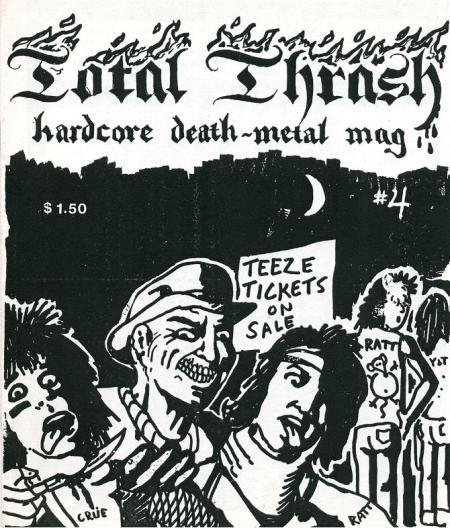

Emma Varela
Faculty Advisor: Dr. Amr Morsey
Evaluation of Long-Term Performance of Transportation Earthworks Prone to Weather-Driven Deterioration Under Changing Climate
The project looks into how climate change will affect the deterioration of embankments. Through use of a well verified model, which simulates the long term performance of these embankments given certain conditions, we found that climate change will negatively affect the long-term performance of these structures, leading to exacerbated failures and shorter service lives.
Experience Description:
I have been doing research with my PI for about a year now and have become proficient using various pieces of software while also becoming much more confident working with large data sets.
I applied to the Leadership Alliance and was selected to go to Stanford this summer and work with a group at SLAC (Stanford Linear Accelerator Center) that is trying to discover axion dark matter.





